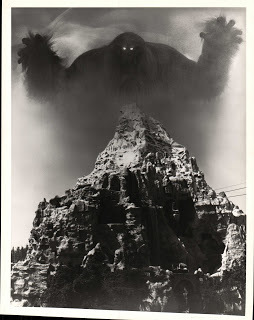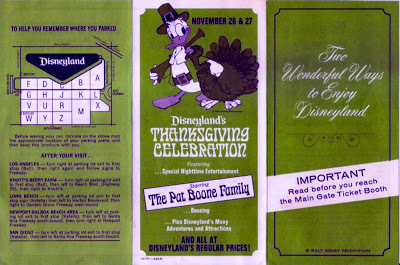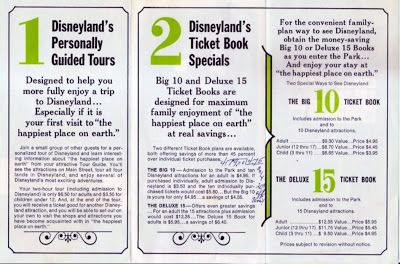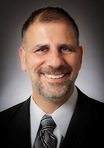Sam Gennawey's Blog, page 16
December 18, 2012
Something in the Mountain
Published on December 18, 2012 19:19
December 17, 2012
The Ultimate WDW Transportation Map
 Get yours today: www.arthurdewolf.com
Get yours today: www.arthurdewolf.com
Published on December 17, 2012 19:18
November 22, 2012
HAPPY THANKSGIVING
Published on November 22, 2012 01:00
September 27, 2012
An Update
Sorry that there have not been any new posts lately. It has been a odd summer and I have started working on a new project that I am sure you will like. An announcement will be coming soon. In the meantime, check out my weekly column at MiceChat. Thanks for visiting Samland. We shall return soon.

Published on September 27, 2012 21:40
August 15, 2012
JUST STUDY IT
“We Really Study It”Maybe it was inevitable that Walt Disney would build Disneyland. He certainly had been studying the idea his entire life. His daughter Diane Disney Miller said, “When I was growing up, he was always talking about doing an amusement park someday.” She speculated, “It probably went back farther than that, to a big amusement park in Kansas City that I’ve read he talked about. He and his sister would stand outside the gates and look in. I think he always had it in his mind.”Walt and his younger sister Ruth were regular visitors to Electric Park in Kansas City, fifteen blocks from their home. What they saw was a magical place where a train ran around the perimeter and landscaping was carefully designed. The park rides were integrated into the landscape and the grounds were well maintained. Every evening, there was a fireworks show at closing time. Animator Ollie Johnston recalled, “Disneyland was really born back before the War, in the early stages after we moved to the new Studio in Burbank. Walt talked about doing something on the Studio lot, then came the War, and all of that was forgotten, and then he built his backyard railroad.” Johnston noted, “The fun he had with his train made him begin to see possibilities. Once his enthusiasm with the backyard railroad was wearing off he started looking around the Studio lot again."For the longest time, Walt had kept his eye on sixteen acres adjacent to the Burbank movie studio. The land was south of the main facilities between Riverside Drive and the Los Angeles River. Walt said, “When I built the Studio over there I thought, well gee, we ought to have really a three-dimensional thing that people could actually come and visit.”Disney historian Randy Bright said Walt’s “first thoughts was to build a playground for kids on the corner of the studio property where they could have all the things they ought to have, but didn’t have at the nearby Griffith Park.” Bob Jones, one of the first two people assigned to the Mickey Mouse Park project, corrected Bright by suggesting that Walt, from the beginning, emphasized that this proposed park should be for total family enjoyment.“Walt was very thorough and he really looked into this stuff,” according to Ollie Johnston. Walt proclaimed, “When we consider a new project, we really study it - not just the surface idea, but everything about it. And when we go into that new project, we believe in it all the way. We have confidence in our ability to do it right. And we work hard to do the best possible job.”Walt gathered his team and sent them out to learn what they could about the attractions business. Imagineer Bill Martin said, “One of the first things Walt had us do was to tour the big amusement parks back East. I went with bill Contrell, Bruce Bushman, and George Whitney to places like Fairmont Park in Philadelphia, Palisades Park in New Jersey, and other parks in New Orleans, Cincinnati, and so forth.”Walt Disney and Art Linkletter traveled to Europe to visit Tivoli Gardens in Denmark. Linkletter said, “He had this little notebook and he’d make notes in it, and I said, “What are you doing?” And he said, “Well Art, it’s just a dream I have of having a ‘family fair’ sometime, and this represents to me an example of the kind of atmosphere I’d like to have.” Linkletter recalled how Walt “pointed out how many places they had for restful seating, that there was no alcohol or raucous entertainment and that everything was well lit and freshly painted every night. The place was meticulous.” Walt said, “Anything that I build will be kept clean, and the employees should feel that they are part of the show.” Although it has been said that Tivoli Gardens was one of the inspirations for Disneyland, his daughter Diane suggested, “It was in his mind that this is what he wanted, and then he saw a place where it was working. He combined everything like the visuals from a movie set. The beautiful landscaping, live music and entertainment…everything was integrated.” Walt personally spent time researching other facilities. According to Dave Smith, former Chief Archivist at the Walt Disney Company, “[Walt] went around to every park he could think of. He had a good friend who ran a carnival at the corner of Beverly and La Cienega [Beverly Park]…[Dave] Bradley was his name…and Walt talked to him for hours and hours at a time, trying to pick his brain.” Beverly Park was near the film studios and convenient for celebrities. Walt liked to spend Sunday afternoons studying the business. The park was very small, only three-quarters of an acre. Bradley had leased the property in 1945 and opened the park in 1946 with partner Don Kaye. In 1947, they built the first children’s roller coaster called the Little Dipper.Dave said, “[Walt] would go down there and sit there on the bench and watch people in line, watch what they were doing…time how long it took them in line…check to see if they were surly after they waited in line for half an hours, whatever. He’d go pace off the length of a queue line. He was certainly doing that. Not only he but a lot of the designers who were working with him.”Bud Hurlbut, creator of the Calico Mine Train and Timber Mountain Log Ride at Knott’s Berry Farm as well as a supplier of amusement park equipment used throughout the Los Angeles region, said, “Walt got to know [Beverly Park] very well. Bradley ended up doing a lot of research for Disney. Walt fixed him up with camera equipment and sent him to Europe to photograph rides for Disneyland.”Walt also asked his team to meet up with Hurlbut. Hurlbut said, “Walt didn’t really come out to visit me personally, back then…he was just kind of looking around at my rides. This was in the early 50s. I saw this man come on my property, and by the time he was there the second or third time I decided he wasn’t just a park customer. I’d that before, and that’s how I sold lots of rides.”Hurlbut was noticing that “Walt was studying how things worked.” So one day Hurlbut walked up to Walt and said, “You look like you’re interested in rides” and he said he was “kind of looking at them.” He was a really nice fellow, so I sat down with him and answered a lot of his questions.” In a conversation between Hurlbut and Dave Bradley, Hurlbut said, “I’d been visited by a man who seemed to know a lot more than we did, and Dave said, ‘Oh, he’s been over to my place…I know him.’” Hurlbut noticed that “Walt Disney really did know what he was talking about…he had his mind made up and his ideas were different. Later, he invited me to see his property (across from the studio in Burbank) when he was thinking of building an amusement park.”Hurlbut remembers, “Walt Disney brought several of his men over to my shop on different occasions in the 1950s. Even before he had his location in Anaheim, he had told me of the different rides he was planning. He invited me over to his house to ride his miniature steam train. I spent several Saturdays over there, and it was just like being with a neighbor.”Walt was not afraid to share his thoughts and to test the water. Martin recalled, Bill Martin: " We took all these sketches being done for Disneyland with us and those people said, "This'll never go!" These were the guys who ran carnivals and we had this new concept, the theme park. Walt was selling nostalgia on main Street, the Wild West in Frontierland,and so forth.”Early on, Walt’s brother Roy seemed to agree with the ‘experts’ and did not share his younger brother’s level of confidence. According to historian John Taylor, “Walt nurtured the idea of an amusement park since the thirties; by 1952 he had sketched out the project, but his ever-cautious brother, who considered it just one more of "Walt's screwy ideas," refused to invest more than $10,000 of the studios money."
Published on August 15, 2012 08:30
August 13, 2012
The Flying Saucers
In honor of the opening of Luigi's Tires at Disney California Adventure, I bring you...The Flying Saucers. A extinct Disneyland attraction that has become the stuff of legends. They were spotted in Tomorrowland for only a brief time. For five years, the attraction rewarded those with great patience and luck. But most of the time it was just broken. Sorry, I am getting ahead of myself. It all started back in 1960 when Imagineer Bob Gurr was assigned to work on a “duck bump” attraction. A duck bump was a popular type of water ride in the Midwest and Walt wanted to bring one west. The ride featured boats, actually a large inner-tube, with a pivoting motor in the middle that a guest could pilot around a pond. The attraction was meant to be the replacement for the failed Phantom Boats.Things change. As Disney Legend Bob Gurr said, “In those days, everybody had a hovercraft project. It was a neat idea…a ‘big buzz’ at the time, and a lot of people were working on it simultaneously." Even the folks at WED had been talking about a flying saucer ride. One day, a German salesman visited WED and he brought a small propeller-powered hovercraft. Walt asked Gurr to check it out. "I tried it out, but I could see nothing but danger in it," said Gurr. Arrow Development, an amusement park ride manufacturer, was also looking at a hovercraft. Gurr noticed that "Arrow's concept of moving the motive force from out of the vehicles to under the floor was a very novel idea." Their system worked like a giant air hockey tableBuilding on that concept, Imagineer Roger Broggie said, "We had figured that we could move a two-thousand pound payload if we had an air jet below with valves that allow air to come up through holes in the floor." It just so happen that a bunch of surplus actuators from the second stage of a Jupiter missile came on to the market. Broggie said, "We bought them and put them to use." When the actuators were installed, the almost immediately failed and Disney sent them back. "They wanted to know what we had done to make them wear out like this," Broggie said. "We estimated the actuators had cycled more than seven million times. They said that their test program had required that the actuators were actually used for five seconds on the second stage of the Jupiter missile for pitch control, then their purpose was fulfilled. They said that they’d over designed it by seven times!"Walt told master builder Joe Fowler to work with Arrow to develop a prototype at their Northern California shop. Walt took a special interest in this project and went up to the shop for a test ride. Gurr said, “He’s extremely interested in how this thing is going to work. He’s Walt Disney, and he’s seeing this test device, and he’s trying to visualize what the attraction will be like, and what public’s response might be. This happened all the time.” The prototype worked and the attraction was put into hyperdrive. Bob Gurr designed the sleek flying saucers and also received a patent for his efforts. In his fun new book Design: Just for Fun he said, "I was now recognized by the United States government as a 'flying saucer inventor,' a title which placed me in good company with all the other flying saucer crackpots of the time." Sixty-four single seat saucers that would float on a bed of air were put into production.To power that bed of air, four giant blowers were mounted below the ground to maintain the air pressure in a complex 16,000 square foot network of air ducts with holes and valves. As a flying saucer passed over a valve, the air pressure would become imbalanced and the valve would open. This provided the lift. The constant air pressure would quickly close the valve once the saucer has moved on. Pilots could steer their saucers by leaning one way or another. Lean forward and air would escape out the back of the saucers skirt pushing you forward. Lean back and you move back. Move either way too much and you stall. Longtime Disneyland Cast Member Ron Dominguez said, "A heavy person would sit there like a slug trying to move around on the table and a kid would bounce. The concept was all right, but that was a tough attraction to operate.”Imagineer Bill Martin came up with the innovative loading/unloading system. Martin said, "The shape of that ride, and the way the boom worked, was from an idea I picked up at Riverside Park in Chicago." The ride in Chicago was a bunch of little boats circulating in a rectangular shaped pond. "When the ride time was up this bridge would wipe these people off the pond, and let the other guys free to play on the pond while they loaded over there for the next time," Martin recalled. His idea to improve upon this system was a "circular area which would load on both sides and with two arms, or booms." Martin received a patent for his design. He noted, "They were supposed to pay me a buck, but never did."The flying saucers were placed on an oval arena that was separated into two halves by the loading platform. Moveable piers unfolded from the loading platform cutting the arena into quarter sections. As the piers moved, they swept sixteen of the saucers tightly against the loading platform. While this was happening, sixteen other pilots would be struggling with their vehicles out on their half of the arena. Each side was operated independently and this system allowed for thirty-two saucers loading while thirty-two saucers were operating at any one time. During installation and testing, the attraction was plagued with problems. "Bob Gurr's hollow saucer really worked well up at Arrow Development when they built the prototype, but that's because the plenum was only four feet deep," according to Bill Martin. "The one we built at the Park was nine feet deep and that was our mistake. Since air squashes and compresses, there was too much lag...we lost our deck all the time, and it took awhile to build up the pressure again."The new attraction opened on August 8, 1961. Due to the mechanical issues, it was the first Disneyland attraction that failed to open on schedule. The attraction was very popular with the public but plagued by maintenance issues. Gurr said, “The pressure under the floor would drop so low that all the “Morgan valves” would open at once, releasing the air beneath. This caused a window rattling sonic boom and the Saucers would drop to the ground.” He blamed it on "undamped divergent oscillation." Due to the operational issues, the saucers closed on September 5, 1966.Gurr said, "In hindsight, had it gone through several levels of production, it could have become successful. What was needed were electronic controls and high speed damper doors so that the flow of air in the plenum could have been kept uniform despite the interaction of the bouncing saucers above, and the pressure changes would not have effected the valves." Like some many of Walt's dreams, the technology was not up to the vision. Gurr noted, “This is always the problem with mechanically operated devices versus those that are electronically operated with sensors that feed a processor which makes all the decisions. With a few electronic feedbacks, and a control system which could have worked the doors quickly, the ride could have continued. But this was all done before computerization. With sensor-pressure data, high-speed action on the damper doors and a program written for damping and smoothing…the whole thing could probably be operated with one PC today.”Did you get to ride the Flying Saucers? Are we seeing history repeat?
Published on August 13, 2012 08:00
August 8, 2012
California Alligator Farm
THE CALIFORNIA ALLIGATOR FARMThis week I am joined by historian Richard Harris as we explore another of Southern California’s long lost tourist attractions. We are about to visit state’s oldest zoological attraction - the California Alligator Farm.The original Alligator Farm dates back to 1906 and was located in Hot Springs, Arkansas. The Farm was started by Joseph ‘Alligator Joe’ Campbell and Francis Victor, Sr. The two men amassed a small fortune by capturing and putting on display hundreds of reptiles.In 1907, Alligator Joe met Francis Earnest, a one-time mining camp cook, and they decided to move the exhibit to Southern California by railcar. They hung a banner over the side of the train advertising the Los Angeles Alligator Farm and unloaded the animals at the corner of Mission Road and Lincoln Park Avenue in the Lincoln Heights neighborhood of Los Angeles. Earnest already owned the Ostrich Farm next door. As Harris describes it, Lincoln Heights was a popular weekend getaway 100 years ago for local Angelinos. Visitors entered the Farm through a white stucco building with a narrow, two-story columned portico. They would stop and pay the 25 cent admission fee. Of course, they would also have the opportunity to buy all sorts of reptilian trinkets including rubber alligators.The alligators were kept out back and segregated according to size in a series of 20 ponds. The alligators would range in size from just a few inches up to thirteen feet. The ideas was the larger ones would eat the smaller ones. They ranged in age from the newly born to several year old elders, if one believed the Farm’s promotional literature.By 1909, the Farm began to supply the motion picture industry with reptilian stars. Some of the alligators can be found in movies such as ‘King Solomon’s Mines,’ ‘The Adventures of Kathleen,’ and countless Tarzan films. Some even found their way into Walt Disney films including ‘The Happiest Millionaire.’ Two years later, Earnest had bought out Alligator Joe and began to add iguanas from South America and 2-foot-long chuckwalla lizards. Chuckwalla lizards would expand their lungs until they are twice their normal size. They were particularly prone to such blowups when the alligators threatened to swallow them. In 1915, movie producer William Selig transformed the adjacent 32 acres into Los Angeles Selig Zoo. Selig gained fame by discovering Tom Mix, Kathryn William, and Bill Farnum. He also made money by manufacturing and distribute movie equipment that he invented. Because of the connection, Lincoln Park would become the backdrop to several Tarzan movies starring Johnny Weissmuller. However, it would be Billy the alligator, reputedly the oldest alligator in captivity, who garnered most of the attention. Billy the Alligator was captured in 1906 in a swamp near New Orleans. Visitors would hold their breath when veteran alligator wrestler George Link would wrestle Billy and other 200-300 pound gators underwater in the 1920s. Billy in particular would become a kind of star in his own right. Nearly all the large alligator jaws seen on movie screens between the teens and the 1960s were his. Directors were fond of this reliable reptile because his jaws automatically opened when a chunk of meat had been dangled above his head just above the camera’s field of vision. The Alligator enjoyed showing off by performing tricks such as sliding down the chutes. He was uncharacteristically docile. So docile that after five decades in the movie business, the handlers could put a saddle on him and give young visitors a ride.A fence that surrounded the entire property was designed to keep the alligators inside and the gator-snatchers outside. Despite that protective measure, Harris reports that the alligator sanctuary was a popular site for many college fraternity pranks. During local universities’ hell week, Pledges were often caught attempting to steal a snapping alligator. Fortunately, only a few alligators bit the hand that stole them.Most of the alligators that escaped did so when flood waters from heavy rains or the nearby reservoir made it easy. Alligators were frequently found taking a dip in the nearby Lincoln Park Lake or in the backyards and swimming pools of neighbors. Another neighborhood annoyance was the noise generated by the more than 1,000 alligators with their frequent bellowing B-flat growl. In 1946, Francis Earnest Sr. passed away and the Farm was taken over by his son Francis Victor Earnest Jr. By May 1953, Ken Earnest, Francis’s grandson, moved the Farm to a new two-acre site at 7671 La Palma Avenue in Buena Park, right next door to Knott’s Berry Farm. He also changed the name to the California Alligator Farm. Guests wandered inside the Farm’s four buildings that housed over one-hundred displays of snakes and lizards from throughout the world. The buildings were not a pretty sight. It was a concrete jungle with a shallow swimming hole for the alligators surrounded by a chain link fence and scraggly bushes and trees intended to recall something in the South. One of the big attractions was an 18-year-old, 250-pound Galapagos tortoise named Humpy. Children of the owners would saddle up Billy the Alligator and Humpy and race them around a 75-foot circular path. Humpy strayed off the track once or twice and had got be pushed back while Billy slithered on course. However, the winner was Humpy every time. It took him 20 minutes to make it around the track. Serious work also took place at the California Alligator Farm. They were the first to breed Mugger crocodiles, Cuban crocodiles, Ceylonese pythons, and the first to breed Nile crocodiles in the western hemisphere. Other attractions included a giant alligator, snapping turtles, and giant tortoises. It was the most complete reptile collection in the world and was advertised as one of the world’s largest reptile farms.A lot of Hollywood celebrities would visit the Farm, both in Lincoln Heights and Buena Park, including Albert Einstein, Lucille Ball, Michael Landen, Anthony Perkins, Chuck Conners, and many more. The collection would become a California landmark. More than 130,000 visitors would pass through the Farm’s doors during the peak years. Earnest told Harris that attendance had dropped to less than 50,000 per year toward the end. Toward the end, the Farm was sold to the private estate of Arthur Jones, the Florida inventor of the Nautilus sports equipment. The Farm lasted until 1984 when the lease on the property was not renewed. The animals were moved to a private preserve in Florida. Going out in style, the closing activities featured a five day rodeo catching all the alligators, crocodiles, and caiman. Today, the former site of the California Alligator Farm in Buena Park is still empty and the only monument is a single pictorial tile set into a Pershing Square bench at 5th and Hill Streets in downtown Los Angeles.
Published on August 08, 2012 04:30
August 6, 2012
The "E" Ticket Magazine
The “E” Ticket MagazineThe “E” Ticket magazine is, in my opinion, one of the best sources of information about the early days of Disneyland. The magazine was published between 1986 and 2009 by Leon and Jack Janzen. The Janzen brothers grew up in the San Fernando Valley and visited Disneyland for the first time in 1958. They were hooked and began to collect things from the park during their visits. In the Spring of 1985, they were inspired they were inspired by a Disney News article by former head of the Disney Archives, David R. Smith about Disneyland collectibles. The brothers realized that they shared the same interest in vintage souvenirs from Disneyland and thought others might as well so they decided to create a newsletter for dealers and fans that collected merchandise. The newsletter was named The “E” Ticket by Jack’s wife Mary Ann. When asked why, the brothers explained in Issue #1 that “there was a time when you carefully removed the best ticket in your Disneyland ticket book…the “E” Ticket…and exchanged it for a ride on the Jungle Cruise, the Mark Twain, or maybe the Pirates of the Caribbean. These wonderful little coupons permitted you to enter the very best attractions in the park or, for that matter, in any park. For most of us, this particular thrill passed with tickets books and childhood. We hope to rekindle some of this innocent excitement by taking a nostalgic look at all theme parks, their memories, and collectibles. Disneyland will be the focus of this newsletter.”In 1986, the brothers Xeroxed 200 copies of Issue #1 for $60 with a two color printed cover and gave them away for free. They decided that the back cover would always feature a photo of Walt Disney.The first four issues mostly featured vintage Disneyland stuff from their own collection. By Issue #5, Imagineer Tom Scherman contributed an article about the 20,000 Leagues Under the Sea exhibit in Tomorrowland and the precedent of Company insiders contributing had been set. In September of 1988, Dave Smith from the Disney Archives gave the brothers an interview and the magazine was deemed legit. A real breakthrough came in Issue #7 with the Marc and Alice Davis interview. This would become the start of a series of talks with the people who built Walt’s park including Bob Gurr, Rolly Crump, Roger Broggie Sr., Ken Anderson, Ward Kimball, Harper Goff, Wally Boag, John Hench, Sam McKim, Ollie Johnston, Bill Martin, Blaine Gibson, Tony Baxter, Bill Evans, Wathel Rogers, Frank Thomas, Marvin Davis, Bob Sewell, Marty Sklar, Fess Parker, Bud Hurlbut, Ray Bradbury, Michael Broggie, and Art Linkletter.By Issue #15 the magazine had graduated to glossy coated paper and by Issue #21 limited color in the interior pages was combined with a new cover format. Sadly, on September 9, 2003 Leon Janzen passed away. For many fans it was thought that the magazine would cease to be published but brother Jack soldiered on until Issue #46. Fortunately, in February 2003, The Walt Disney Family Museum had begun the process to become the archive for the brothers work and back copies of the magazine are still available in the gift store. Diane Disney Miller said, “An important part of our museum’s mission is to continue to support research and acquisition of materials…interviews, letters, artifacts, that deal with my dad’s life and work, that we can present to those who seek us out. Nobody has done a better job of gathering, and preserving material related to Disneyland, to theme parks in general, than Leon and Jack Janzen. The “E” Ticket is a treasure that will enrich our museum’s archive, and that, with Jack’s guidance; we will continue to make available. Each issue has something of interest, of meaning, to all who have memories of their first visit to Disneyland, and those who want to know more about how it all happened. The talented people who designed the park, created the rides, made my dad’s dreams and convictions happen, come alive in the issues of The “E” Ticket. There’s much to learn there, in these beautiful magazines, and to enjoy.”
Published on August 06, 2012 02:30
August 1, 2012
Billy Hill and the Hillbillies
BILLY HILL AND THE HILLBILLIESIn the book, DisneyWar, author James B. Stewart suggests that the definition of the Disney ‘magic’ is that point when the guest’s apprehension turns into awe and delight. You can frequently see this moment as you watch a child’s eyes as they meet their favorite character or when an adult laughs because they made it through a thrill ride unharmed. I feel that one of the most reliable places to find this magic is watching Billy Hill and the Hillbillies inside of the Golden Horseshoe Saloon at Disneyland. Billy Hill and the Hillbillies first began performing at Disneyland back in December 22, 1994. They got their start at a show called “Pig Mania” where they played music and raced pigs. Seriously. This is show business. They have also played outside the park, in parking lots, and very, very early for morning radio shows.Starting on June 18, they will be moving out of the Golden Horseshoe Saloon for the summer and heading north to the Festival of the Fools arena (didn’t think that one through, eh?) to play in a larger venue and hopefully help to absorb the giant crowds the Resort is expecting this year. Frankly, I would be hard pressed to suggest a better way to spend a bit of time in the shade during a hot summer’s day. Recently, I sat down with one of the many Billy siblings. Rumor has it that there are thirteen or fourteen brothers all named Billy. Some of the boys have nicknames. This was was called Kirk Wall. He is the one my wife calls “Sexy Billy.” Hmmm. Kirk started back at Disneyland playing the Wally Boag role of Peco Bills in the first version of the Golden Horseshoe Review. By this time Wally had already retire after more than 39,000 shows and the role was being filled by Dick Hardwick. Kirk was Dick’s sub and learned how to twirl guns and spit out teeth. Kirk said that he swallowed a few, “Breathed one in and coughed it across the room.” After leaving and working elsewhere for a couple of years, Kirk came back and was one of the founding members of Billy Hill and the Hillbillies. I have made it a habit to bring anybody who rarely comes to Disneyland to see the show. Frequently, they will mention that this was one of their favorite memories and something makes Disneyland different then the other theme parks. Where the Billys excel is in how they bring that Disney magic to the audience show after show. Of course, there is always a core group of die hard Billy fans in the audience. You can count me as one. But it has been my observation that many people in the audience are in the building because it is air conditioned, they can sit, or there is food. There are lot of people are not even aware that there is a show about to happen. Whatever is their initial motivation, I have noticed that most guests will find themselves going through the same experience. It goes something like this.The band gets their attention with an upbeat opening tune that blends in a little comedy, a bit of Disney music, and the irresistible sound of a bluegrass band. The song ends and the die hards cheer wildly suggesting to others in the audience that there may be something special going on up there. The first thing most people figure out is that these guys are really funny. Then they get sucked in and realize that they are listening to extraordinary musicians and that is when the magic happens. Kirk said, "If we didn’t have that 'expertmenship' if we didn’t have the best players, which we certainly do, I mean they are top dog players, this would not be possible." he added, "Every one of us respects the job and the fact that we get to play in front of thousands, every day, improving our craft. We are lucky and we make sure to keep a good attitude. We have been together for 20 years and have been through a lot.”Kirk said, "What is really nice is that we have a really large appeal. We appeal to teens who are too cool to like anything. We also still appeal to grandmas and grandpas and families and stuff." The band has begun to gather a following from people who enjoy Rockabilly music. Kirk noted, "They appreciate the earliness of what made rock and roll and what made country all come together. They appreciate the nostalgia of the music and the roots of where it came from.”Over the years, the band has played more than 25,000 shows. Kirk recalled one of the stranger shows, "We were doing Puddle Prance (a parody of River Dance). As you know, I make it like we can’t disconnect, our arms are locked together and I got the bow way up my nose. I knew we were all connected. It is a mess. So I was trying to put that across but this earthquake happened and we all went like - boink - and fell to different parts of the stage.”For me, one of my favorite shows was the Leap Year Day performances. The first show started after midnight and the rest ran through to sun up. I saw the 1:45a and 2:45a performances and they were incredible. I asked Kirk about the shows and he said they were "shocked. We didn’t expect anyone. When they asked us to do it we were honored to be asked but we thought it was going to be a long night playing in front of an empty room. As it turned out it was full every room with people who like us. Everybody knew us and had seen us so I treated it like we were friends. It worked at that level.” It was a very special morning. So who else stalks the side booths hoping to grab a coveted box seat to see the Billy Hill and the Hillbillies show?
Published on August 01, 2012 03:30
July 30, 2012
KNOTT'S BERRY FARM
SAMLAND GOES TO KNOTTS BERRY FARMIn Persistence of Vision magazine, J.G. o'Boyle suggested that "a theme park is not ride-dependent. A theme park without rides is still a theme park. An amusement park without rides is a parking lot with popcorn." I am here to say after my recent visit to Knott's Berry Farm in Buena Park, we still have a wonderful theme park and one that seems to be getting better and better under the new management team.Just ignore the background music. More on that in a bit.It has been a couple of years since my last visit to Knott's Berry Farm. My colleagues at MiceChat have been encouraging me to go and see the changes that have been taking place, especially the improvements to the Ghost Town section of the park. I am glad that I did.As a regular MiceChat reader, I am sure you have become very familiar with Knott's. The site regularly provides updates. No wonder. Knott's is a true Southern California tradition. Knott's Berry Farm was the inspiration of Walter Knott and his wife Cordelia. Just like Walt Disney, these hard working folks were always trying to find that angle that would bring them success. In the case of Walter Knott, he wanted to find the perfect berry to grow and sell. He searched high and low and came across the treasure he was seeking in 1932. Walter found a handful of Boysenberry plants in the yard of its creator, Rudolph Boysen. He took them home and nurtured them back to life. This was exactly the berry he was looking for. They are a cross between the red raspberry, blackberry, and loganberry and they were gigantic. By the Great Depression and World War II, Knott's was the place to go. It was not uncommon for the line to get in the restaurant to top 3+ hours. By 1939, their daughter Virginia was taking advantage of the crowds and set up a little gift stand. To keep the people waiting in line entertained, Walter decided to relocate the Gold Trails Hotel from Prescott AZ. This was the beginning of Ghost Town and Walter Knott's life long passion to bring the heritage of the old west to the people. Over the years, Walter continued to collect old buildings and rebuild them and bring them back to life. He collected a group of people who would add that personal touch and the result is America's first theme park (Okay Mel and Richard, Luna Park, Tivoli Gardens in Anaheim, I know, I know, this point can be argued). With the opening of Disneyland in 1955 a lot of people thought that Knott's Berry Farm was doomed. In fact, Knott's flourished. Walter Knott and Walt Disney shared the same values. They both provided a unique high quality product that was priced fairly. They both tried their best to serve the public need. They we both risk takers. If you want to learn more about the amazing history of Knott's Berry Farm I strongly recommend Knott's Preserved by Christopher Merritt and J. Eric Lynxwiler.In 1997, Cedar Fair bought the family park and the feel of the park began to change. It seemed like Knott's was trying to become a mini-Six Flags Magic Mountain featuring thrill rides. The entire Roaring 20s themed area was ripped up and replaced with a bland sea of concrete pretending to be a tribute to the California surf and racing culture. The result was a parking lot punctuated by big steel amusement park thrill rides.Thankfully. Ghost Town remained. It started to look a bit shabby but the heart of the Park was still there. As we planners would say, the space has good bones. All it needed was a bit of tender loving care. Then along comes the new management team. It is amazing what results a bit of paint, care, and attention can bring.As I continue to dive deeper and deeper into the history and development of Disneyland, I am always surprised at how much of an impact Knott’s had on Walt’s thinking for his park. For example, the California Marketplace outside the gates of the Park has a bunch of fun somewhat hidden features like the fern grotto on the way to the restroom or the reproduction of the mantle from Mt. Vernon. Walt was so impressed that in 1961 he developed a mixed-use retail center for the parking lot at Disneyland to be called California Living. The retail center would have been built around a lake and styled as a beach resort along the lines of Catalina Island. Walter and Walt borrowed and repaid each other in ideas on a number of occasions.One of my favorite rides at Knott’s is the Stage Coach. As they say, the only profitable stage coach line since the creation of the railroad. I just love it when I get to sit on top, right behind the driver, and watch the four horses pull us along. It is an authentic experience that can not be matched with 3D films and motion simulator vehicles. While you are waiting (and if you get there late enough, you will be waiting) take a look at the 1877 Rules for Stage Riders. Some of the highlights include:Abstinence from liquor is requested but if you must drink, share the bottle. To do otherwise makes you appear selfish and un-neighborly.Gents guilty of unchivalrous behavior toward lady passengers will be put off the stage. It's a long walk back. "A word to the wise is sufficient."Don't snore loudly while sleeping or use your fellow passenger's shoulder for a pillow; he (or she) may not understand and friction may result.Ghost Town is filled with little touches that may not be making Knott's tons of money but do add up to create a entertaining and potentially educational experience. Over the past couple of years, Knott's has gone on a major rebuilding spree and have refurbished many of the buildings along Main Street in Ghost Town. More importantly, they have restored the interiors and brought back the folk art look of life in the old Frontier. These figures are not your sophisticated Disney Audio-Animatronics but hand-carved and hand-painted heads stuck on mannequin bodies with extremely limited animation. Take your time and peek into the windows. It will be well worth it.Throughout the Ghost Town area are little touches like the constantly moving empty rocking chairs on the balcony of the hotel or the old-fashioned hand water pump or old Deadwood Dick, freshly buried on the spot kicking the bucket. Fresh flowers have been planted everywhere providing contrast to the decaying buildings. Be sure to pay a visit to the jail. You never know what you might hear from the one prisoner who has been locked up for almost 60 years. And invest 50 cents at the big store at the end of the street to watch an animated cow and horse tell each other really bad jokes. You can even drop a couple of quarters at a historic destination - the shooting gallery. Knott's is also home to the very first shooting gallery to use light instead of buckshot. Walter Knott, always the innovator.Knott's is also the birthplace of the hidden queue line. Bud Hurlbut, the creator of the Calico Mine Train and the Log Ride told the story of one visit from Walt. Hurlbut recalls “one time when Walt Disney came over to Knott’s and he told me he was kind of in a hurry, but he wanted to ride the Calico Mine Train. At that particular time there were no people in front of the ride, but when we walked back past the trestle, the whole line was full of people! Walt said, “My God, that’s a sneaky thing! There are two hundred people in line back here and I didn’t know there was anybody!” Of course, Walt copied the idea for his Park.I also suggest to take some time to look through the shops. Unlike Disney who seems to carry the same thing in every shop, Knott’s has gone the other direction. Why, you can even buy knives and fake guns that look very, very real. How fun. The Geode Shop is worth a visit just to see rocks signed by famous folks such as Steven Tyler, Kevin Bacon, and Diane Keaton.I wish that the Bird Cage Theatre would reopen. The old timey melodramas would be a great break in a Park that otherwise is light on sit down shows. The theater was a terrific training crowd for artists who went on to great success like Steve Martin. It is also worth while to step into the schoolhouse and the Outpost. The schoolhouse is loaded with details of a bygone era. The Outpost features all sorts of creepy, crawly things that your kids can play with. The Museum is one of my favorite spots plus there are relicts everywhere from old mining camps and one can learn a lot about life in the wild west.Like all Ghost Towns, there is a cemetery. However, you will rarely find one that comes alive quite like this one. Just be careful if you step on the grave of Hiram McTavish. Strange things are also happening in the undertakers shop and if you peek in the window you might even see a bit of magic.Speaking of magic, be sure to visit the Mystery Lodge. This show was brought to Knott's from the Vancouver World's Fair in 1994 and uses the Pepper's Ghost illusion seen in the Haunted Mansion to tell a Native American folklore tale about life. Adults will find the show interesting and the children in the audience seemed riveted by the effects.There are other shows at Knott’s. The Wild West Stunt Show is a fun way to spend 20 minutes and if you are not careful, you might even get a bit wet. If you get there early enough, you can even sit inside of a Conestoga Wagon and enjoy the show. The Calico Saloon Show is a must and a real throwback. The tiny stage behind the bar is unique. Plus, you are likely to encounter good cowboys and bad cowboys while walking through Ghost Town. And it is required that everybody who visits must take one spin on the Calico Railroad. I realize that I have spent most of my time talking about Ghost Town. I also have positive feelings for the Fiesta Village area and Camp Snoopy. This is an extremely well designed children's play area and the first of its kind in any amusement park to cater to the 12 and under crowd. I am a big fan of Silver Bullet. It is one of my favorite big steel coasters and reminds me of Dueling Dragons (sorry Dragon Challenge) at Islands of Adventure in Florida. It is a buttery smooth inverted coaster that has solid elements and even a chance to catch a bit of air, unusual for this type of coaster. Jaguar is another coaster that zips along the top of the trees. It isn’t the most exciting thing but does provide a good view. Xcelerator is not for the squeamish with it’s 0-80 mph launch in just 2.3 seconds into a 205-foot ascent.Knott’s has other thrill rides that are common to other parks. Boomerang is just a headache waiting to happen, Perilous Plunge has to be one of the sillier water rides ever built. Bigfoot Rapids is a surprisingly fun raft ride. Supreme Scream is just not my cup of tea. Three of the more popular thrill rides will have to wait for another visit. Windseeker, the Sierra Sidewinder, and Pony Express were down that day. And kudos to the Knott's folks for refurbishing the Sky Cabin. Love the view of Orange County and beyond. Now back to the area music. Walking through Ghost Town you hear an upbeat mix of 80s and 90s music that has nothing to do with the theme of the old west. Management argues that the music puts people in a festive mood. It may aver well do that but I say it takes away from the atmosphere. A good compromise would be to find pop music with a bit of a country bent. In my mind, I kept wanting to hear Bon Jovi's Dead or Alive or something like that. If you ever want to see somebody fired up about this topic, drop Fishbulb here at MiceChat a note. Will I go back.? Of course, had a such a good time I took advantage of the inexpensive season pass program. With Disney and Universal having major openings this summer, Knott's is going to feel like a wonderful retreat. Better still, the food. They now serve the world-famous fried chicken and my favorite, the Country Fried Steak. All beige goodness.
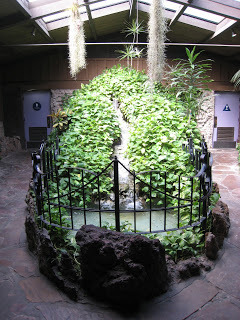
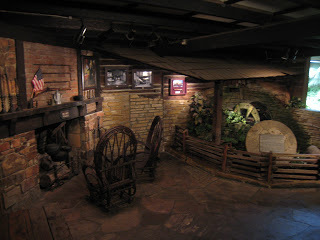
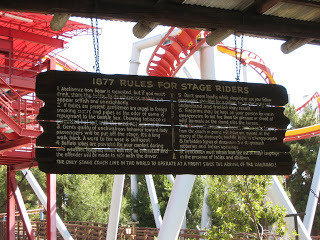
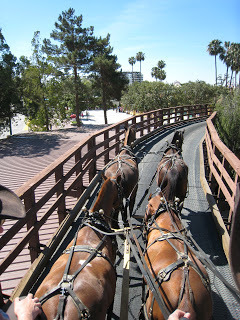
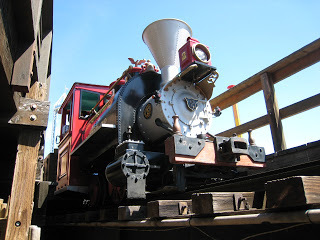
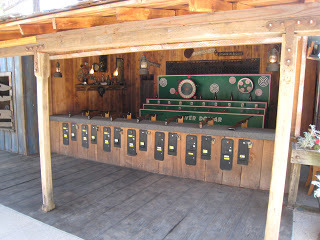
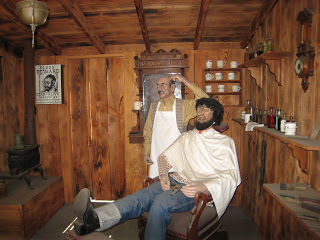
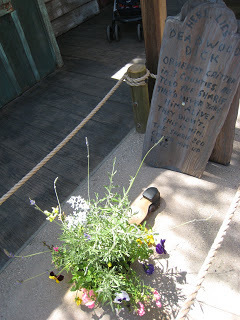
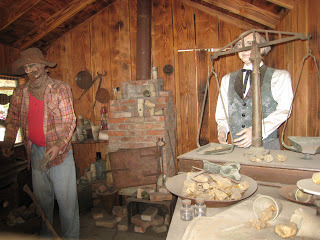
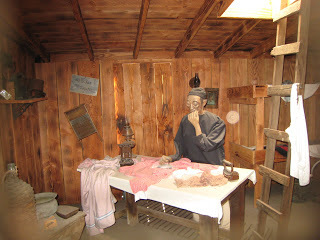
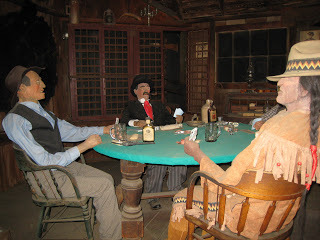
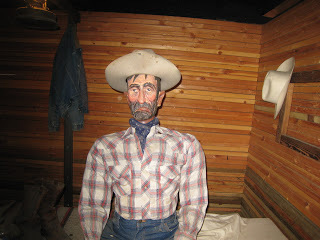
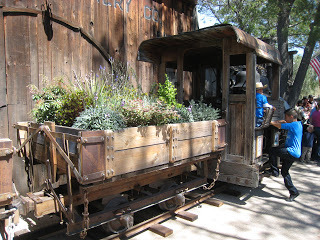
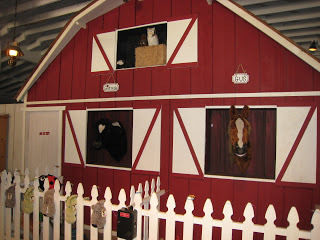
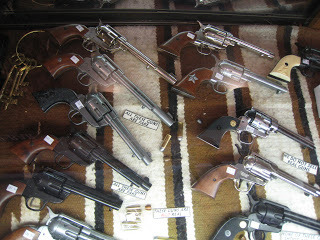
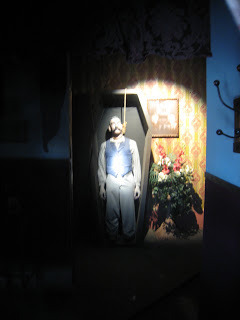
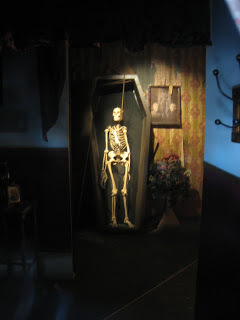
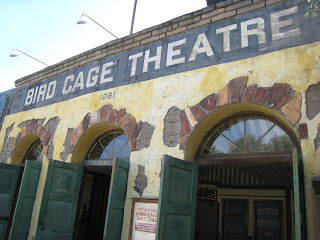
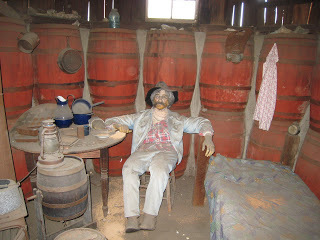
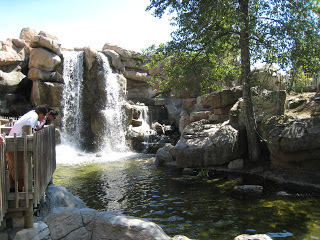
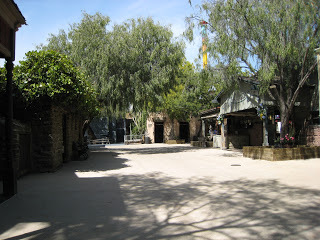
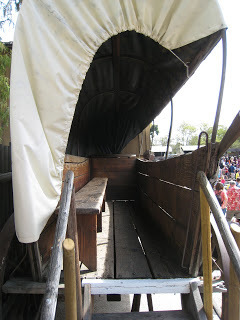
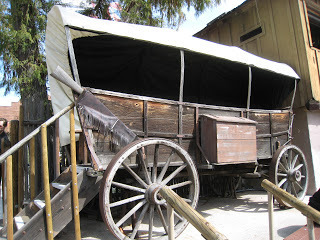
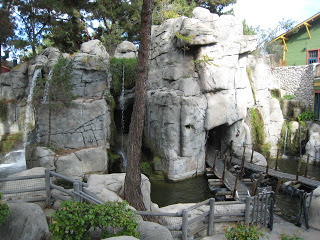
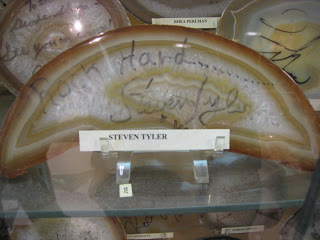
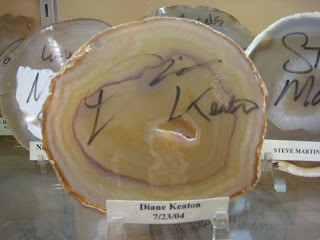
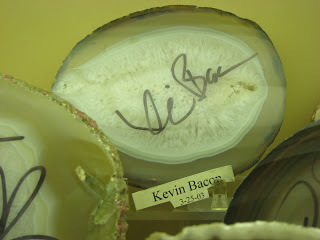 What kind of experiences have you had at Knott's?
What kind of experiences have you had at Knott's?
Published on July 30, 2012 02:00

